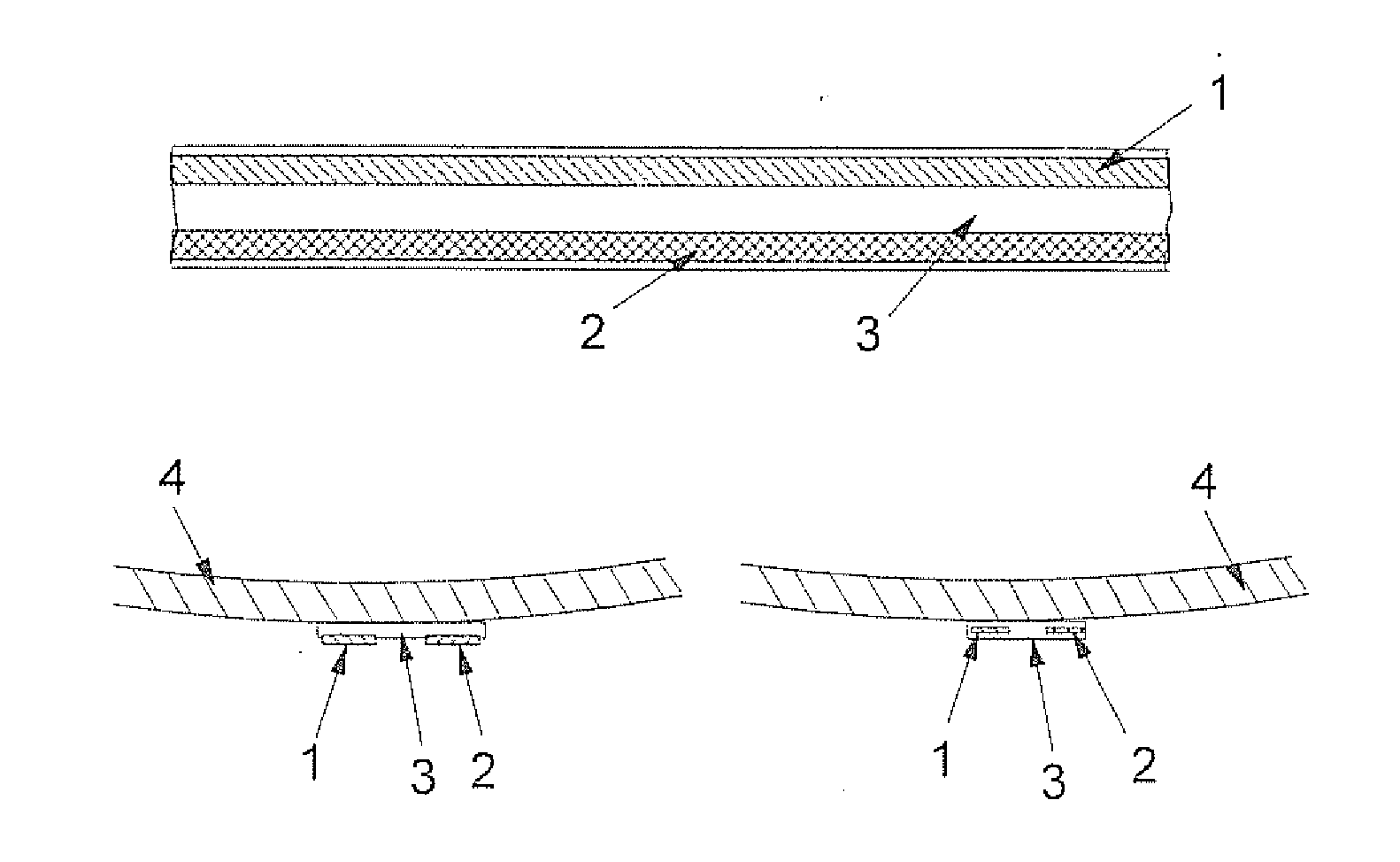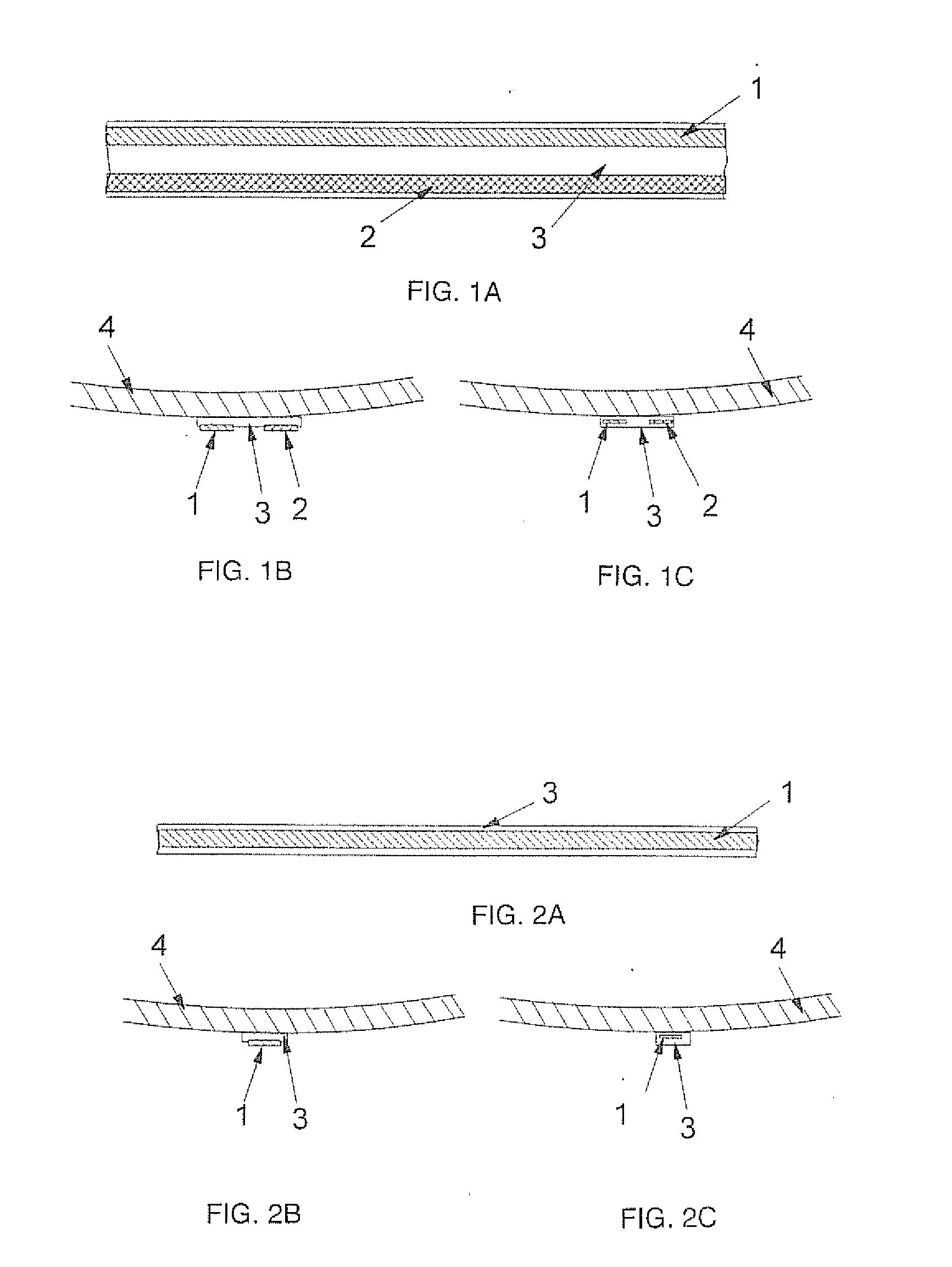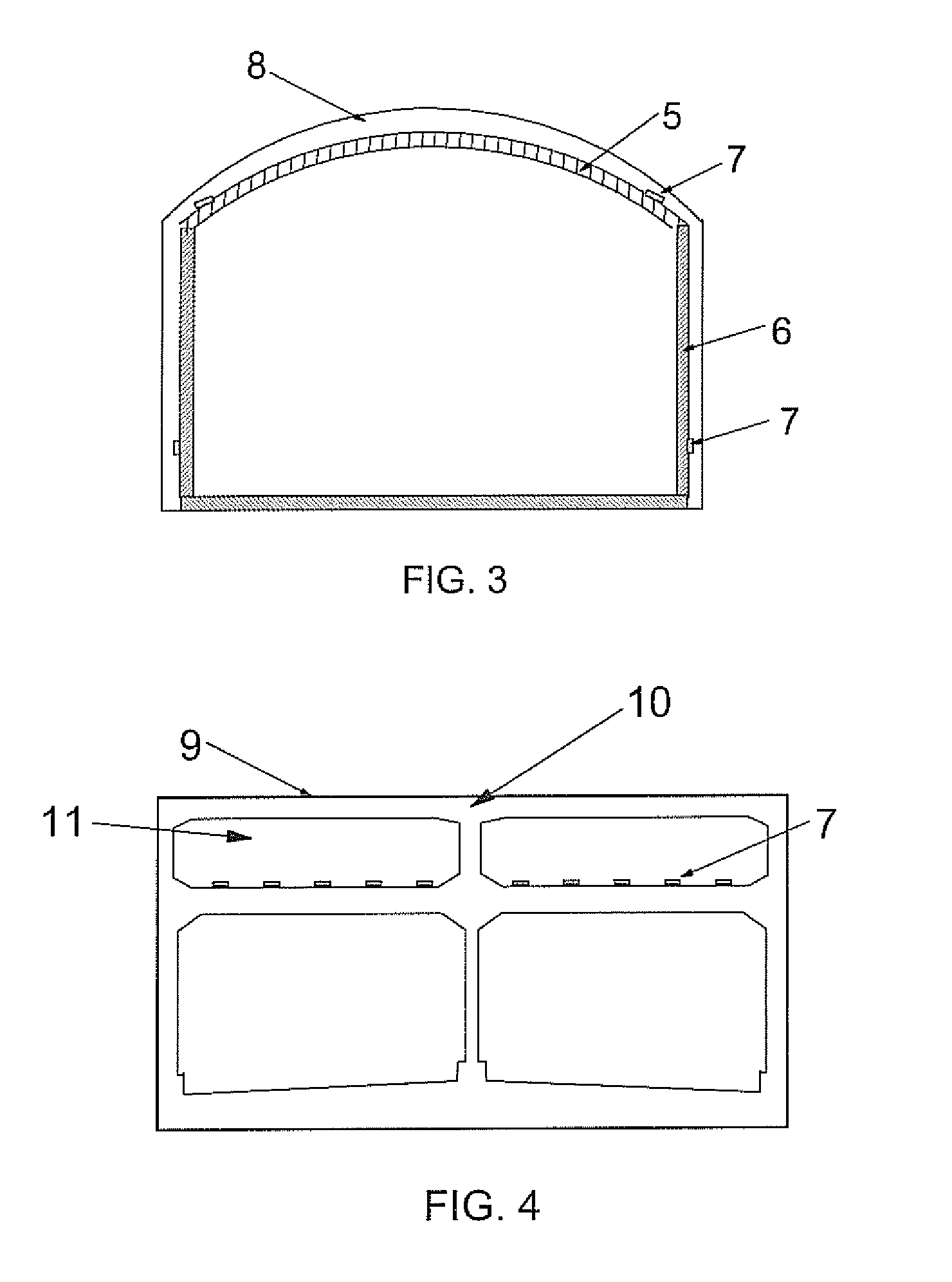Method and apparatus for detecting moisture on metal and other surfaces, including surfaces under thermal insulation
a technology for thermal insulation and metal, applied in the direction of measurement devices, material electrochemical variables, instruments, etc., can solve the problems of large financial losses, manufacturing downtime, and leak detection due to corrosive failure often too late, so as to achieve significant reduction of the cost of detailed inspection and testing
- Summary
- Abstract
- Description
- Claims
- Application Information
AI Technical Summary
Benefits of technology
Problems solved by technology
Method used
Image
Examples
Embodiment Construction
[0026]By way of background, in a given environment such as water, one metal will be either more noble or more active than the other, based on how strongly its ions are bound to the surface. Using the water as an electrolyte, the more noble metal will take electrons from the more active one. The resulting mass flow or electrical current can be measured to establish a hierarchy of materials in the medium of interest. This hierarchy is called a galvanic series, and can be a very useful in predicting and understanding corrosion.
[0027]When two dissimilar metals are surrounded by a non-electrolyte or dry material, they do not develop a potential difference between them. When the two dissimilar metals are immersed in an electrolyte, however, the potential difference between them can be measured. The present invention uses this principle. When the two dissimilar metal tapes are spaced apart and not in direct electrical contact, they show different potentials or voltage in electrolyte as ind...
PUM
 Login to View More
Login to View More Abstract
Description
Claims
Application Information
 Login to View More
Login to View More - R&D
- Intellectual Property
- Life Sciences
- Materials
- Tech Scout
- Unparalleled Data Quality
- Higher Quality Content
- 60% Fewer Hallucinations
Browse by: Latest US Patents, China's latest patents, Technical Efficacy Thesaurus, Application Domain, Technology Topic, Popular Technical Reports.
© 2025 PatSnap. All rights reserved.Legal|Privacy policy|Modern Slavery Act Transparency Statement|Sitemap|About US| Contact US: help@patsnap.com



